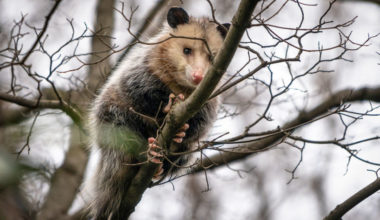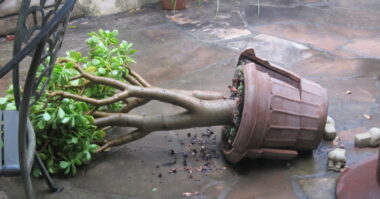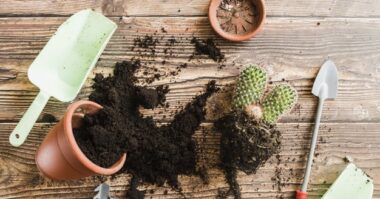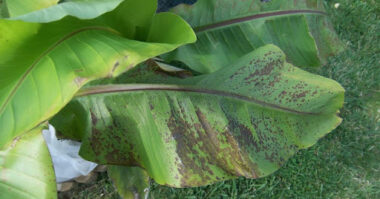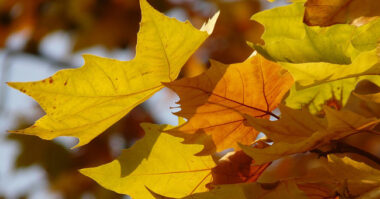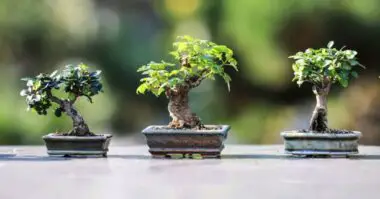Alocasia, also known as elephant ear, has graded leaves with beautiful designs. Although robust, the plant remains airy and elegant because of the height of the stems that grow from a tuber.
These stems can be plain but also tabby and the leaf is also very evocative. There is a variety whose leaves look like African masks, another with leaves with wrinkled edges and one that is called skeleton plant because the veins of its leaves are very clearly drawn.
The flowering (in the form of a spike) is not very impressive and the decorative value of the plant lies mainly in its beautiful leaves.
Contents
Why does my alocasia cry?
Leaves of houseplants and garden plants alike can start to drip when there is excess moisture in the air and the plant has just been freshly watered. This excess of water creates a pressure on its roots and the plant can no longer regulate its water level properly.
It will therefore start to drip to reduce the pressure on its roots.
Although guttation is not dangerous for plants, it can indicate overwatering.
Overwatering can be harmful to the alocasia, which can lead to root rot. As for pests, it can fall prey to mealy bugs as well as red spiders.
Consequences
Mealy bugs are easily spotted, they leave waxy threads and honeydew on the pretty leaves of your plant. They will feast on its sap, so delaying treatment is putting it at risk.
Solutions
As soon as they appear spray an insecticide on the affected parts, preferably organic as everyone knows. A natural treatment is to mix olive oil, black soap and methylated spirits in a liter of water.
An infestation of red spiders can be seen as soon as the first webs they have woven appear. These mites hate humidity, so misting your plant regularly as a preventive measure will prevent and/or stop their spread.
How to spot a sick alocasia?
If you have a colocasia, you probably know that they are not at all frost tolerant, require regular, consistent water and a full sunny location. These large-leafed plants can grow quite quickly and their leaf production is prolific.
Although they need plenty of water, they can develop problems in stagnant water or if they are allowed to dry out for long periods. Sick alocasia may suffer from cultural problems or may have a pathogen or insect problem.
You can always tell when your children are sick, but sometimes it can be hard to see if a plant is feeling ill until it is too late. Many signs that it is not feeling well will show up on the leaves. For example:
- Stunted leaves may indicate a lack of macro-nutrients.
- Pale leaves may indicate a micronutrient deficiency.
- Speckled or spotted leaves that are distorted may indicate spider mite damage.
- Wilted or curling leaves are indications of too little water.
- Soft spots in the stems or roots may indicate too much water.
Deciphering alocasia disease symptoms can be confusing, but start with the most obvious cultural conditions and if that’s not the problem, move on to possible fungal, viral or bacterial problems.
The 3 main diseases of alocasia
Phytophthora leaf blight
Phytophthora is a fungal disease caused by the fungus Phytophthora colocasiae. This serious, waterborne disease first manifests itself as tiny, round lesions on the leaves. The center of each lesion oozes a clear liquid that turns yellow or purple when dry.
The spots, which are dark purple or brown, rapidly enlarge and coalesce. In addition, the leaves are covered with a white, fluffy material that is the growth of fungal spores. Over time, infected leaves collapse. In severe cases, the fungus can descend into the bulb and destroy it as well. Copper-based fungicides can be used to prevent phytophthora leaf blight.
They should be sprayed on plants when they are about 4 weeks old. Continued applications (weekly in wet weather and bi-weekly in dry weather) are necessary until the alocasia is about 9 months old.
Pythium rot
Pythium rot is the most serious disease affecting alocasia, according to the University of Hawaii. This common disease, which affects other plants (including potatoes and tomatoes), is caused by Pythium parasites, not fungi, as originally thought. Like fungi, they spread in water and thrive in very wet soil.
In fact, the microorganisms like water so much that this disease is often called simply “water rot.” Affected alocasias suffer a general decline or die quickly as the bulbs decay in the soil. Seedlings are the most vulnerable. Pythium rot can be prevented by ensuring that planting areas are sanitary and that irrigation water is not contaminated.
Phyllosticta spot
According to the University of Hawaii, Phyllosticta leaf spot is not as serious as pythium rot or phytophthora blight. In fact, it is only an aesthetic problem and does not threaten the life of the alocasia. For this reason, fungicides are rarely used to treat or prevent the fungal disease.
Phyllosticta leaf spot appears as brown lesions on the leaves that dry out and fall off the foliage, giving the alocasia a “bulging” appearance. The leaves may also look like they are dusted with black pepper, which is the fruit of the fungus. Like many other fungal diseases, the spores of this fungus travel in water. Therefore, be careful not to get the foliage wet during irrigation.
8 insect pests of alocasia
1. Leafminers
Leaf miners are the larvae of various pests, including moths, flies and beetles. Although the larvae leave streaks and spots on the leaves, they are relatively harmless and treatment is usually not necessary. Sticky traps will trap egg-laying adults, and insecticidal soap can be effective when needed.
2. Spider mites
Spider mites are difficult to see with the naked eye, but can be easily identified by their fine webs. These insects cause streaks and spots to appear on the leaves, as well as discoloration.
Affected leaves may fall off if the pests are not controlled. Application of neem oil or insecticidal soap is an effective way to get rid of them. Water adequately, as spider mites are attracted to dry, dusty conditions.
3. Whiteflies
Whiteflies are another type of sap-sucking insect. When few are present, they are relatively harmless, but when infestation occurs, plant leaves can turn yellow and dry and subsequently fall off.
As with other sap-sucking pests, the sweet substance created by whiteflies attracts ants and fumagina. To eliminate whiteflies, try sticky traps and insecticidal soap or neem oil.
4. Mealybugs (Pseudococcidae)
Mealybugs (Pseudococcidae) are small nectar-sucking insects and the damage they cause can be enormous. There are two types of mealybugs: shell mealybugs, which are found primarily on woody tissues such as branches and trunks, and mealybugs, which are protected by a waxy coating.
They can be difficult to control, but neem oil can be very effective. Regular use of insecticidal soap can also help.
5. Aphids
Aphids only live for about a week, but an adult female can reproduce quickly. These small sucking insects often cluster under leaves and secrete a sticky substance that attracts ants and fumagina. Use neem oil or insecticidal soap to eliminate aphids.
6. Earwigs
Earwigs are mostly beneficial, but they can be harmful when feeding on vegetables and some other plants (such as alocasia), including chrysanthemums, clematis and dahlias. They are easy to trap with small pieces of garden hose or in tuna cans with cooking oil.
You can also drill a small hole in a cardboard box and place a small amount of oats in it as bait. Keep the area free of debris, as earwigs like to hide in cool, damp places.
7. Cutworms
Cutworms are the larvae of certain moths. These pests hide under leaves and plant debris, emerging to lay their eggs on alocasia. They will eat almost anything in their path, often breaking through the stems of young plants at ground level.
Remove plant debris. Handpick cutworms in the late afternoon or early evening. Create barriers to prevent them from reaching your alocasias (e.g., cardboard collars, eggshells, coffee grounds, diatomaceous earth) and encourage birds to visit your garden.
8. Thrips
Thrips are small flying insects with fringed wings. They are sap suckers and will discolor and deform almost any type of plant (including alocasia).
Their droppings leave tiny black spots on the leaves and they often create white patches on the leaves and petals. Thrips are difficult to control and often require a combination of different methods, such as sticky traps and insecticidal soap or neem oil.

